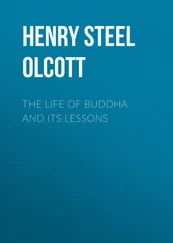The picture that emerges in these accounts is various and shifting in its details but never less than gruesomely vivid. There are seven compartments ( medorim ) in Gehinnom containing various kinds of sinners and five kinds of fire. Every compartment is divided into seven thousand holes, and their breadth and height are each three hundred years’ journey. Each compartment is presided over by a special angel, who in turn commands thousands of subsidiary angels of destruction. The punishments of Gehinnom are meted out on the principle of an eye for an eye. Slanderers hang by the tongue, robbers by their hands, adulterers by their sexual organs, wanton women by their breasts, and coveters by their eyes. Whereas the Talmud sees Gehinnom as a purgative ordeal lasting twelve months, the medieval accounts fix twelve months as a sentence that must be served in each of the compartments, as the suffering soul is lowered from one to the other in a succession of increasingly severe tortures.
In constructing the compartments of Gehinnom that figure so sensationally in Hamashal vehanimshal , Agnon had recourse to another important source from a very different cultural sphere. Immanuel of Rome (1261–1328), a contemporary of Dante’s, was a satirical Hebrew poet who introduced the sonnet into Hebrew poetry. In his collected poetic works — he called his diwan the Maḥbarot —there is an extended cycle in rhymed prose titled “Hatofet veha‘eden,” which describes a tour of Hell and Heaven guided by the biblical Daniel. Immanuel Judaizes Dante by replacing Christian schemata with the Rabbis’ teachings on Gehinnom in the Talmud while preserving the poetic conventions of the Divine Comedy . To be sure, the Maḥbarot did not circulate widely in rabbinic circles, yet Immanuel’s composition was well enough known to be banned by Yosef Karo in the Shulḥan arukh . Although it is unlikely that this particular vision of Hell would have been known to the elders of Buczacz listening to the shamash’s tale, it was certainly known to Agnon. And even if there are no borrowings from Immanuel in the story’s Gehinnom scenes, the reader familiar with the history of Hebrew poetry hears the echoes of Dante in Jewish guise in Agnon’s very enterprise of exploring this territory.
In sum, an unprecedented expansion of the Jewish theological imagination in the Middle Ages provided Agnon with much material to draw on in constructing these key scenes in his story. Indeed, the template for each scene is conventional, and therefore familiar, in giving a name to a compartment, specifying its dimensions, citing the angel appointed to supervise it, explaining the nature of the sins being punished and sparing no grisly or horrific detail in the execution of those punishments. Yet if these scenes are conventional in their presentation of the afterlife and familiar from the medieval ethical literature, then why is it that the shamash was so deeply shaken when he saw these sights many years ago, and why are his listeners in the present time of the story similarly shaken? The answer is that although the template is familiar, the content Agnon has placed within it is a radical departure that subverts some of the deepest convictions of the Jews of Buczacz. To understand the disturbing originality of Agnon’s account, let us first delineate the four distinct scenes that make up the tour of Gehinnom.
There are altogether four scenes from Gehinnom: (1) Kaf Haqela (the Sling), (2) Tsalmavet (Shadow of Death), (3) Gag ‘al Gag (Roof upon Roof), and (4) the Tatar horsemen. (The fourth scene differs from the rest; it has the characteristics of a nightmarish vision particular to the shamash’s febrile imagination. When he speaks of his tour of Gehinnom, he does not include it, speaking only of three compartments.) The first contrasts with the second and the third in that it precedes the encounter with Aaron’s shade and is in fact a series of tortures that take place outside Gehinnom. It is additionally distinct from those two in the confidence with which the shamash explains the scene; he does not need the rabbi to parse the meaning of strange and inscrutable practices. Based on a passage in the Talmud (Shabbat 152b), the scene describes sinners being flung by gigantic slingshots from the gates of Gehinnom back to the original sites of their sins, which, because of their sins, are no longer identifiable. Having failed to enter Gehinnom, they are flung back and forth until they are wholly worn down. Worse than the fate of confirmed sinners is that of those who wanted to sin and had sinful thoughts but lacked the opportunity to sin. Because of lack of commission, they cannot avail themselves of the process of regret and contrition that purges sin; it remains with them forever. Worse still are “those contemptible people who feel false pangs of conscience and fancy that they have repented, yet all the while they are consumed by sinful thoughts and their illusory pleasures” (20). Of these latter, says the shamash not without a note of grim humor, “No one can accuse me of loving sinners, but when I see them flung around like that, I am quite ready to hire myself out as the doorkeeper of Gehinnom so I can personally let them in” (20).
The Kaf Haqel‘a scene established disorientation as the sign under which all the subsequent matters relating to Gehinnom will be presented. What happens in the Netherworld, the shamash tells his listeners, does not conform to your notions, and it is much worse than you think. The norms and hierarchies we live by do not apply there. Reason and received rabbinic teaching would dictate that sins actually committed warrant a more severe punishment than those merely contemplated, but not so in that world, in which the order is reversed. You would think that the quest of the sinner to return to the site of his sin and expiate it would be rewarded, but the infernal ordeal into which he has been thrust makes that impossible. You would think that Gehinnom is terrible, but in fact there are those for whom admission to Gehinnom would be a kindness. This first iteration remains abstract; the sins of the sinners are not named. The stunning, upending news to come is that there are sufferers in Hell who, remarkably, resemble — and in most cases are superior in learning and scholarship to — the shamash’s listeners themselves.
This cognitive disorientation is explicitly named in the descriptions of the second and third compartments. The first is called Tsalmavet [Shadow of Death] and the second Gag ‘al Gag [Roof upon Roof]. Both compartments are filled with innumerable scholars, heads of yeshivot and chief rabbis, from the time of the Mishnah through the period of the Spanish Inquisition to the present. In the first, the scholars are floating in space and separated from each other by great distances, and in the second they are piled one atop the other. Central to both is a grotesque scene of desire repeatedly frustrated. The myriad scholars are all puffed up with self-importance, and each believes that the fate of Torah wisdom depends solely on him. And he wants nothing more than to broadcast his novel insights and arguments and induce his fellow to acknowledge his superior acumen. But not only is the wished-for acknowledgment denied, the very possibility of communication is nullified in the most gruesome way. In the first compartment, the ears of the listener grow bigger and bigger until they cover his entire body and muffle the scream that dies in the throat of the scholar who sought to impress him, whose own lips have enlarged to engulf his body. In the second compartment, the lips of the speaker fly away from him, and his tongue becomes impaled on his teeth and swells to the size of a church bell. His listener attempts to yell from horror, but no sound comes out of his mouth. “I am an old man and have seen much trouble and travail,” says the shamash, “but misery like that I have never seen.”
Читать дальше












![Edward Ellis - Adrift on the Pacific - A Boys [sic] Story of the Sea and its Perils](/books/753342/edward-ellis-adrift-on-the-pacific-a-boys-sic-s-thumb.webp)